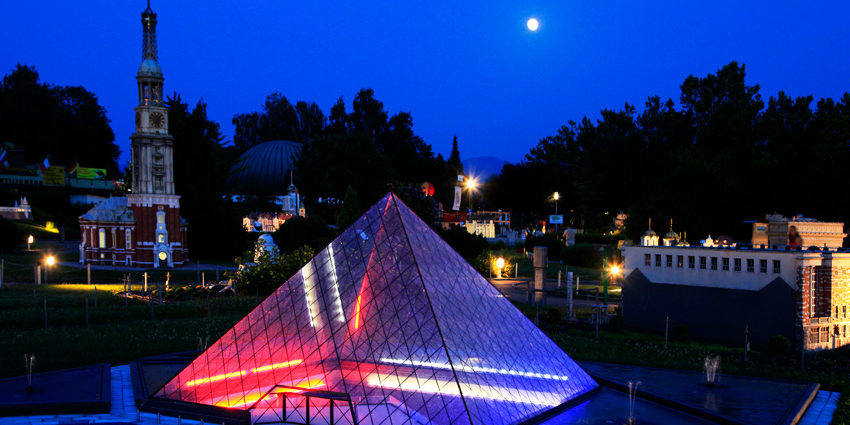The Louvre in Paris houses one of the biggest and most visited museums in the world – the Musée du Louvre. The French President François Mitterrand commissioned Chinese American architect Ieoh Ming Pei to design the entrance area to the museum. The proposal to construct a glass pyramid with an underground entrance was the subject of much debate beforehand. The pyramid was built in the inner courtyard of the Louvre between 1985 and 1989. The construction girders are made from rust-proof steel and the glass components are composed of silicon-coated white glass which is fully transparent unlike normal glass which has a green shimmer. Overall, the pyramid is made from 603 diamond-shaped and 70 triangular glass segments. It is 21.65 m tall and the sides are 35 m long. The overall weight stands at around 180 tonnes. The pyramid is surrounded by 7 triangular fountains. Not only has the entrance area been renovated; the rooms within the Louvre museum as well as the facades and gardens have been revamped. When the renovation work began, some 2.5 million people came here to view the exhibitions each year. In 2009, there were 8.5 million visitors. The only main entrance through the pyramid has only been designed to cope with half of the current visitor total. And so it is becoming difficult to handle the masses of people attracted by the pyramid and museum today.

